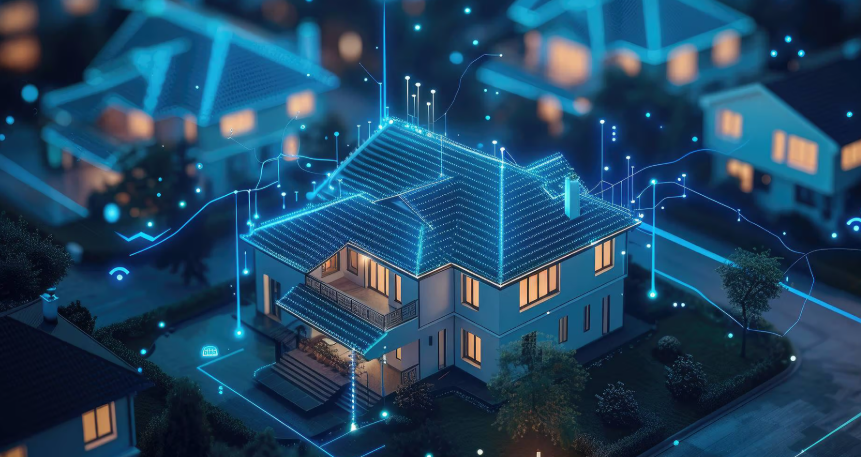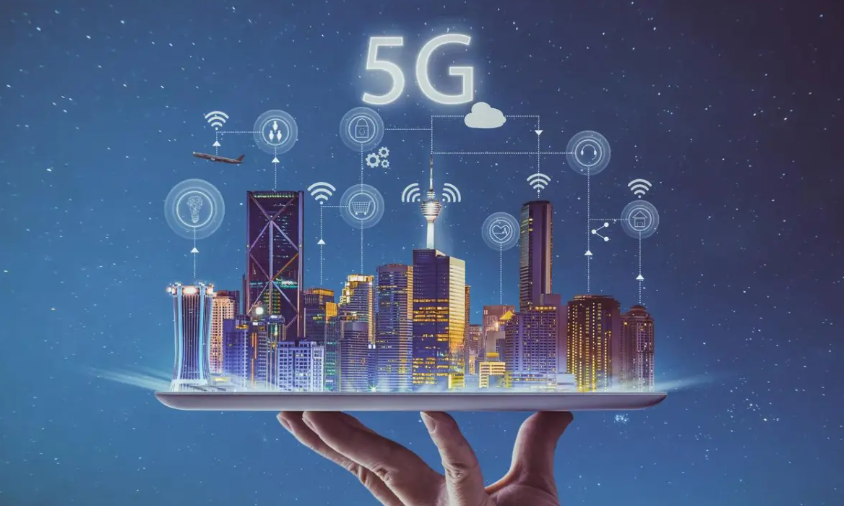Introduction: The Future of Living
In recent years, smart homes have transitioned from a futuristic concept to a reality that is rapidly transforming the way we live. Technological innovations are bringing unprecedented convenience, security, and efficiency into our everyday lives. As smart devices become more integrated into our homes, the possibilities seem endless. From controlling lighting with your voice to monitoring your home security remotely, these advancements are reshaping the very fabric of modern living.
This article delves into how smart home technology is evolving, its benefits, and the ways it is impacting various aspects of daily life. We will explore the key components of smart homes, the devices that make them possible, and the advantages and challenges that come with this technological revolution.
What is a Smart Home?
Defining Smart Home Technology
A smart home is a residence equipped with devices that allow remote management and monitoring of systems such as lighting, heating, air conditioning, security, and entertainment. These devices are typically connected to the internet, allowing homeowners to control them from their smartphones, tablets, or voice assistants. This level of automation offers greater convenience, efficiency, and security than traditional homes.
See also: Exploring 5G Technology: What It Means for the Future of Communication
Key Components of a Smart Home
To create a true smart home, several key components must be present:
- Smart Devices: These include sensors, cameras, lights, thermostats, and appliances that can connect to a network.
- Internet Connectivity: A stable internet connection is essential to allow communication between devices.
- Smart Hubs: These devices act as central control points that manage interactions between various devices.
- Automation Software: Applications that enable scheduling and remote control of devices.
The Evolution of Smart Homes
Early Stages of Smart Home Technology
The journey to modern smart homes began in the 1960s, with the introduction of the first home automation systems. These early systems were bulky and not widely adopted due to their complexity and cost. However, by the 1990s, the rise of the internet and Wi-Fi technology paved the way for more accessible and user-friendly smart home devices. Over time, these systems became more affordable and interconnected, leading to the smart homes we know today.
The Growth of IoT (Internet of Things)
The Internet of Things (IoT) played a pivotal role in the development of smart homes. IoT refers to the interconnection of everyday devices through the internet. The ability to link devices like thermostats, lights, locks, and cameras has revolutionized how we interact with our homes, making them smarter, more responsive, and easier to control.
How Smart Homes Work
Integration of Devices
At the core of every smart home is device integration. Smart devices are designed to communicate with one another via a common protocol, such as Wi-Fi, Zigbee, or Z-Wave. This interconnectedness allows homeowners to automate tasks and create routines, such as adjusting the thermostat when they leave for work or turning off the lights automatically at bedtime.
Smart Home Networks and Communication
The heart of a smart home is its network. Devices in a smart home communicate over local networks (such as Wi-Fi) or via dedicated hubs that manage multiple smart devices. These networks are crucial for ensuring that devices respond promptly to commands and function smoothly together.
Popular Smart Home Devices
Smart Lighting Systems
Smart lighting allows users to control the brightness, color, and timing of their lights remotely or through automation. This technology not only adds convenience but also improves energy efficiency by allowing homeowners to schedule when lights should be on or off.
Smart Thermostats
A smart thermostat, such as the Nest Thermostat, learns a household’s heating and cooling preferences and adjusts accordingly, optimizing energy use. These systems can be controlled via smartphone apps, making it easier to regulate home temperatures while saving on energy costs.
Smart Security Systems
Smart security systems include doorbell cameras, motion sensors, and smart locks. These devices provide real-time alerts and allow homeowners to monitor their properties remotely, enhancing home security and peace of mind.
Voice Assistants and Smart Hubs
Voice-controlled assistants like Amazon Alexa, Google Assistant, and Apple Siri act as the central command hub for many smart homes. These voice assistants allow users to control devices with simple commands, making home automation more intuitive and accessible.
Benefits of Smart Homes
Enhanced Convenience
One of the primary advantages of smart homes is the level of convenience they provide. Whether you’re controlling lights, security cameras, or appliances, you can manage it all remotely through apps or voice commands. Tasks that once required manual effort are now automated, saving time and reducing stress.
Energy Efficiency and Cost Savings
Smart homes help reduce energy consumption by allowing precise control over heating, lighting, and appliances. For example, smart thermostats optimize energy use by adjusting temperatures based on occupancy patterns. As a result, homeowners can see significant cost savings on utility bills.
Improved Security
With smart security systems, homes are more secure than ever. Homeowners can monitor their property in real time via cameras and motion sensors, even when they are away. Smart locks also add an extra layer of protection, ensuring that doors can only be opened with authorized access.
Accessibility and Aging in Place
Smart homes are also enhancing the quality of life for elderly individuals or those with disabilities. Devices like voice assistants can help with daily tasks, and smart home systems can be tailored to provide extra support, enabling seniors to live independently for longer.
Challenges and Concerns
Privacy and Security Risks
With the increasing number of connected devices comes the risk of hacking. Privacy concerns are a major issue in the smart home landscape. If not properly secured, smart devices can become vulnerable entry points for cybercriminals, potentially putting personal data at risk.
Cost of Smart Home Devices
Although prices for smart home devices are dropping, the initial investment can still be high. High-quality smart thermostats, cameras, and lighting systems can cost several hundred dollars, making it difficult for some homeowners to fully embrace the smart home revolution.
Complexity of Integration
While setting up a smart home may seem simple, integrating multiple devices can be complex. Compatibility issues may arise if devices do not support the same communication protocols or are made by different manufacturers.
The Future of Smart Homes
AI and Machine Learning in Smart Homes
Looking ahead, the integration of artificial intelligence (AI) and machine learning will make smart homes even more intuitive. AI-powered devices will learn from user behavior, adapting automatically to changing preferences. This will improve convenience, security, and energy management in ways that are not possible today.
Sustainability and Smart Homes
As concerns over climate change continue to grow, smart homes are expected to play a significant role in sustainability. Devices that monitor energy usage and control appliances more efficiently will reduce overall energy consumption, helping homeowners minimize their environmental footprint.
Conclusion
The rise of smart homes is fundamentally transforming how we live, offering benefits that enhance convenience, security, and sustainability. While challenges such as privacy concerns and costs remain, the future looks promising as technology continues to evolve. As smart home devices become more accessible and affordable, we can expect to see even greater adoption, with homes becoming smarter, more efficient, and more connected.
Frequently Asked Questions (FAQs)
1. What makes a home a “smart” home?
A smart home features devices that can be controlled remotely, usually via an app or voice assistant. These devices are connected to the internet, allowing for automation and control of various functions like lighting, temperature, and security.
2. Are smart homes safe from hackers?
Smart homes can be vulnerable to cyberattacks if not properly secured. To protect your devices, use strong passwords, update firmware regularly, and invest in a secure home network.
3. What are the most popular smart home devices?
Popular smart home devices include smart thermostats, lighting systems, security cameras, voice assistants, and smart locks.
4. How do smart thermostats save money on energy bills?
Smart thermostats learn your temperature preferences and adjust heating and cooling automatically. They can also be controlled remotely, allowing you to optimize energy use and reduce unnecessary consumption.
5. Can I install a smart home system myself?
Yes, many smart home devices are easy to install and configure. However, integrating multiple devices into a cohesive system may require technical knowledge, especially if compatibility issues arise.
6. Are smart homes the future of living?
Yes, as technology continues to evolve, smart homes will become increasingly common. They offer convenience, efficiency, and security, making them an essential part of modern living.



